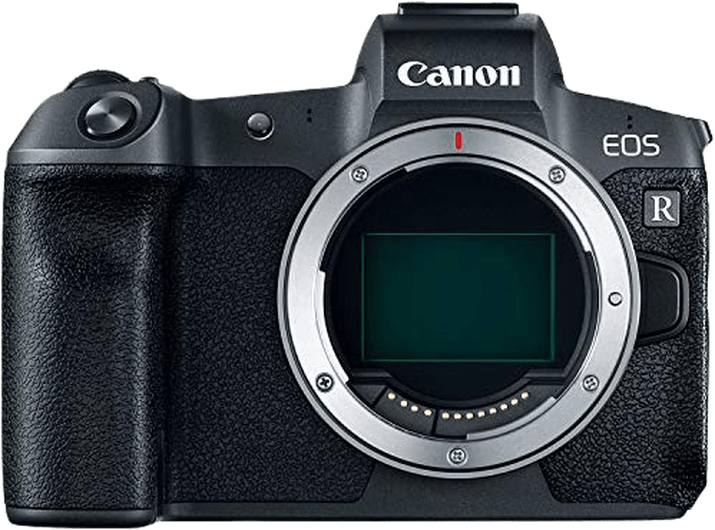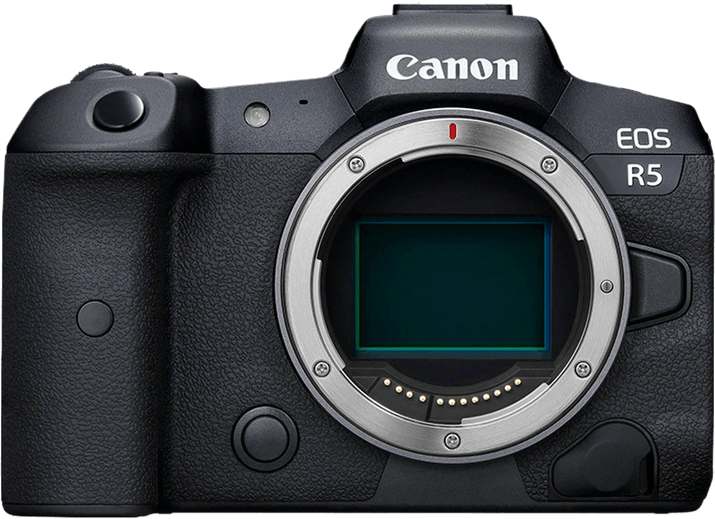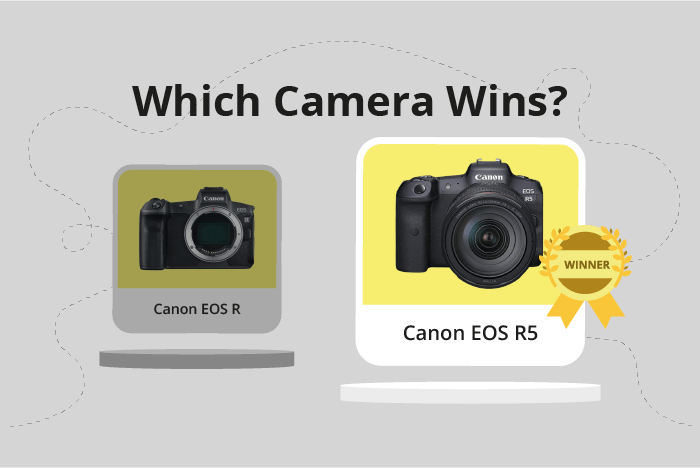Canon EOS R vs EOS R5 Comparison
Canon EOS R

Canon EOS R5

The Canon EOS R5 takes the lead with a score of 86/100, while the Canon EOS R trails behind with a score of 74/100. Both cameras are mirrorless and share similar dimensions, with the R5 measuring 138 x 98 x 88mm and the EOS R at 136 x 98 x 84mm. The R5, however, is slightly heavier, weighing 680g compared to the EOS R’s 485g.
The R5 outshines the EOS R in several aspects, such as its release date, being a more recent model launched in 2020, while the EOS R was released in 2018. Additionally, the R5’s higher score reflects its superior performance and features. On the other hand, the EOS R has a more affordable launch price of $2300, compared to the R5’s $4499.
Taking these points into consideration, the Canon EOS R5 stands out as a better camera, offering advanced features and performance, while the Canon EOS R remains a decent option for those seeking a more budget-friendly choice.
Canon EOS R vs EOS R5 Overview and Optics
The Canon EOS R5 outperforms the Canon EOS R in optics, scoring 88 out of 100 compared to the EOS R’s 73. Both cameras share some common specifications, such as a CMOS sensor, full frame sensor size, and Canon RF lens mount.
The EOS R5’s superiority is evident in its higher megapixel count of 45 compared to the EOS R’s 30.3, providing greater detail and resolution in images. Furthermore, the R5 has a significantly faster shooting speed of 20 frames per second, double the EOS R’s 8, allowing for better capture of fast-moving subjects. The R5 also boasts a superior Digic X processor, contributing to faster performance and improved image quality. Additionally, the R5’s sensor has a higher DXOMARK score of 95, compared to the EOS R’s 89, indicating better overall sensor performance. A key advantage of the R5 is its built-in image stabilisation, which the EOS R lacks, resulting in steadier shots and reduced camera shake.
The EOS R, however, is not without its merits. It offers a respectable 30.3 megapixels and an 8 frames per second shooting speed, which may be sufficient for some users depending on their needs. While it has a lower DXOMARK sensor score of 89, this still reflects a high-quality sensor performance.
Ultimately, the Canon EOS R5 is the superior choice in terms of optics, thanks to its higher megapixel count, faster shooting speed, better processor, and image stabilisation. The Canon EOS R still offers decent performance but falls short in comparison to the R5.
Canon EOS R vs EOS R5 Video Performance
When comparing the Canon EOS R and the Canon EOS R5 in terms of video capabilities, the Canon EOS R5 is the clear winner with a video score of 100/100, while the Canon EOS R holds a score of 70/100.
Both cameras share some common features, including having built-in time-lapse functionality. However, the Canon EOS R5 surpasses the EOS R in multiple aspects. Firstly, the R5 has a higher maximum video resolution of 8K compared to the EOS R’s 4K resolution. The R5’s maximum video dimensions are 8192 x 4320, which is significantly larger than the EOS R’s dimensions of 3840 x 2160. This difference in resolution and dimensions results in higher image quality and detail in the R5’s video output.
Additionally, the Canon EOS R5 has a higher maximum video frame rate of 120fps, whereas the EOS R’s maximum frame rate is 30fps. The higher frame rate allows for smoother video playback and better slow-motion capabilities in the R5.
On the other hand, the Canon EOS R does not possess any specific advantages over the R5 in terms of video capabilities. Its lower scores in video resolution, dimensions, and frame rate make it inferior to the R5 in this aspect.
Considering these points, the Canon EOS R5 is undoubtedly the superior choice when it comes to video performance. With its higher video score, the R5 offers better image quality, increased detail, and smoother video playback than the EOS R. For those seeking a camera with exceptional video capabilities, the Canon EOS R5 is the recommended choice.
Canon EOS R vs EOS R5 Features and Benefits
The Canon EOS R and Canon EOS R5 both have a feature score of 87 out of 100, indicating that these cameras have impressive features. They share several specifications, including a 3.2-inch screen size, 2,100,000-dot screen resolution, touchscreen capability, flip screen, and the absence of GPS. Additionally, both cameras have WIFI and Bluetooth capabilities.
Despite having the same feature score, there are aspects where one camera outperforms the other. The Canon EOS R5 excels in its advanced autofocus system, which provides more accurate and faster focusing. This feature is crucial for photographers who need to capture fast-moving subjects, such as wildlife or sports events. The R5 also has a higher resolution sensor, allowing for more detailed images and better performance in low light conditions.
On the other hand, the Canon EOS R has a smaller and lighter body, making it more convenient for travel and daily use. It also has a lower price point, making it more accessible to a wider range of photographers, especially those on a budget.
Considering the similarities and differences between the Canon EOS R and Canon EOS R5, it is evident that both cameras offer remarkable features. The R5 is the better choice for photographers who require advanced autofocus and higher resolution, while the EOS R is ideal for those who prioritize portability and affordability. Ultimately, the decision depends on the specific needs and preferences of the photographer.
Canon EOS R vs EOS R5 Storage and Battery
The Canon EOS R5 outperforms the Canon EOS R in storage and battery with a score of 68/100 compared to 35/100. Both cameras accept SD, SDHC, and SDXC memory cards (UHS-II compatible) and offer USB charging capabilities. However, the R5 has an advantage with two memory card slots and compatibility with CFexpress cards, providing more storage options and flexibility.
On the other hand, the Canon EOS R has a slightly better battery life, offering 370 shots compared to the R5’s 320 shots. This advantage may be important for photographers who prioritize longer shooting sessions without needing to change batteries. Both cameras use different battery types, with the EOS R using the LP-E6N and the R5 using the LP-E6NH.
Despite the EOS R’s advantage in battery life, the R5’s superior storage capabilities and overall higher score make it the better choice for most photographers. The R5 addresses the needs of professionals and enthusiasts alike, while the EOS R may be more suitable for casual users who value longer battery life.
Canon EOS R vs EOS R5 – Our Verdict
Are you still undecided about which camera is right for you? Have a look at these popular comparisons that feature the Canon EOS R or the Canon EOS R5:

